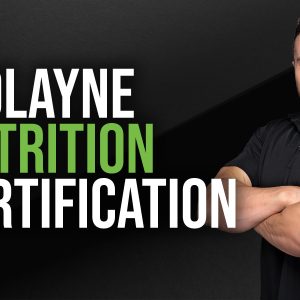Understanding maintenance calories is a skill you’re about to dominate.
Your client has finished their fat loss phase, making it to their goal weight. Check.
They then followed their reverse diet to a tee. Check.
What comes next? What is the benefit of your client eating at their maintenance level of calories?
What are “maintenance” calories?
When your client is eating at “maintenance”, this is the caloric intake that is required for them to MAINTAIN their body weight. You might also know this as a client’s TDEE or ‘Total Daily Energy Expenditure’.
This total amount is made up of your client’s:
- Basal Metabolic rate (BMR)
- Non-Exercise Activity Thermogenesis (NEAT)
- The Thermic Effect of Feeding (TEF)
- And their Exercise Activity (EA), or Physical Activity Level (PAL)
While understanding maintenance calories, it is important to keep in mind that a client’s maintenance level of calories is not a SET number, but is a caloric RANGE of somewhere between approximately 200-300 calories.
How do we calculate a client’s maintenance calories?
There are a number of different formulas, or online calculators that can be used. These formulas include the Katch-McArdle Formula and the Müller Equation, while a popular online calculator is www.tdeecalculator.net.
It is important to keep in mind that these will just provide an ESTIMATE number for you to work with – a starting point. This number will also be what’s known as your client’s ‘predicted maintenance’.
The most accurate way you can determine a client’s ‘actual’ maintenance would be through tracking their intake and their average weight, over a two week period, and comparing the change in the two over this time.
No change = your client is eating at maintenance!
What if your client’s ‘actual’ maintenance is lower than their ‘predicted’ maintenance?
This is where you can continue your client’s reverse diet – until their actual maintenance and their predicted maintenance are the same. This is the point where your client’s metabolism is considered “normal”.
Benefits of eating at maintenance calories
After spending time in a caloric deficit, negative metabolic adaptations can occur.
These adaptations can include, among others:
- Slowing of your client’s metabolic rate
- Reduced ability to lose body fat
- Reduced leptin levels (the satiety hormone)
- Increased ghrelin levels (the hunger hormone)
- Down-regulation of thyroid function and sex hormones
- Reduced NEAT and overall energy
By spending time at maintenance following a dieting period, it gives your client’s body a chance to recover. This time will allow your client to maximise their metabolic capacity, and in turn, maximise their capacity to lose fat, if they were to go into another cutting phase. Starting another cutting phase from their maintenance level of calories will give you more room to move with your client, especially when it comes to hitting any plateaus, as opposed to starting a fat loss phase when your client has been maintaining on 1400 – 1500 calories per day.
Your client is also going to FEEL much better eating at maintenance – they will experience increased energy, improved performance in the gym, a higher libido, less hunger and increased satiety.
Therefore the MAIN benefit to eating at maintenance, following a period of fat loss, is RECOVERY. This is the time to look after your client’s metabolism, so their next cutting phase – whether it be for a comp prep, or to lose a few unwanted kilograms, becomes a breeze.
Want to learn how to create effective and results driven diets that have been trialed, tested & are evidence based, for clients from all walks of life? Get The Biolayne Nutrition Certification by Dr Layne Norton, which includes the Science of Nutrition! Enrol now!
References:
Baker, P. & Norton, L. (2019) Fat Loss Forever. Biolayne.
Dr Layne Norton (2020) The Science of Nutrition. Clean Health Fitness Institute.
Norton, L (2012) Biolayne Video Log 9 – Metabolic Damage, YouTube, 7 December, viewed 5 August 2020.
Norton, L (2020) Maintenance Calories, YouTube, 12 February, viewed 5 August 2020.







